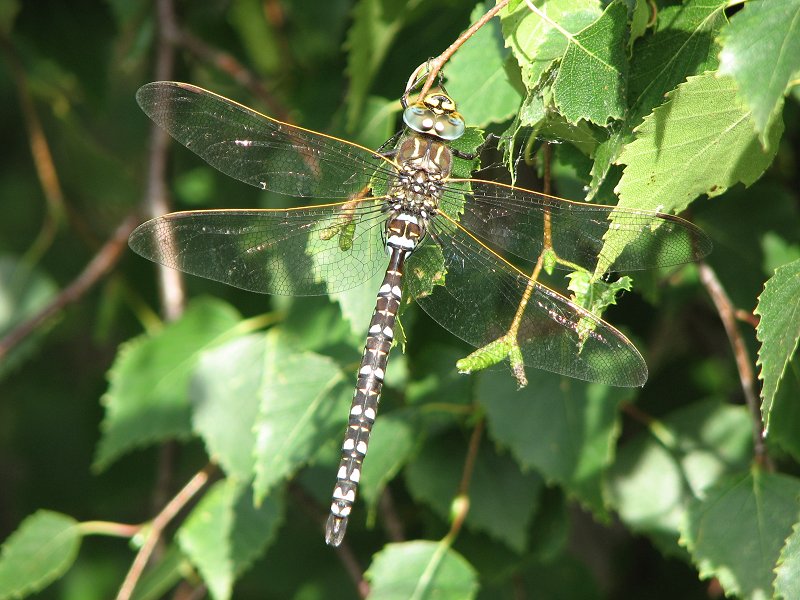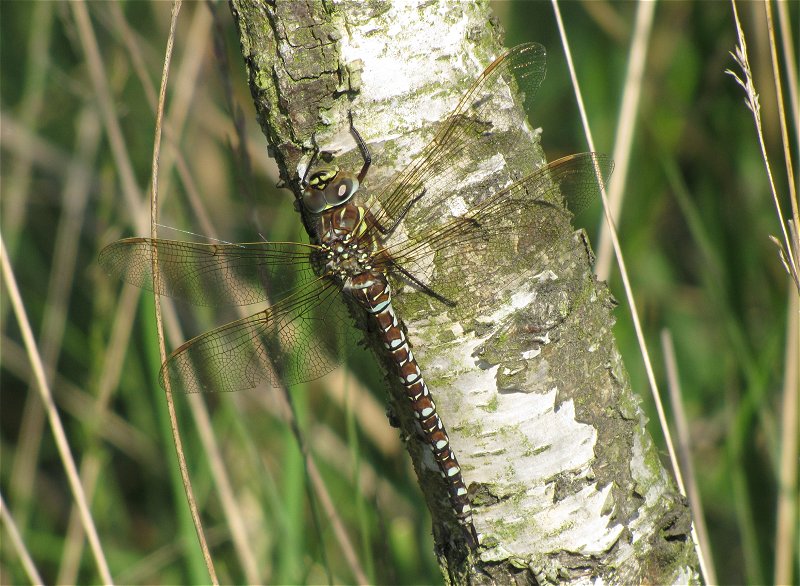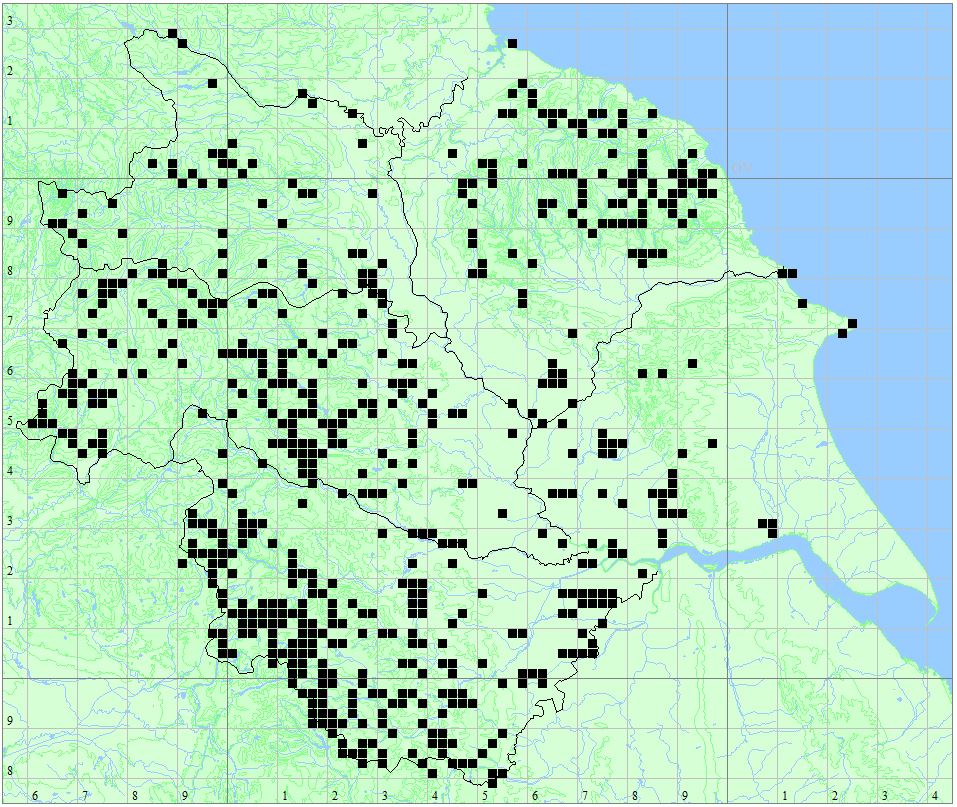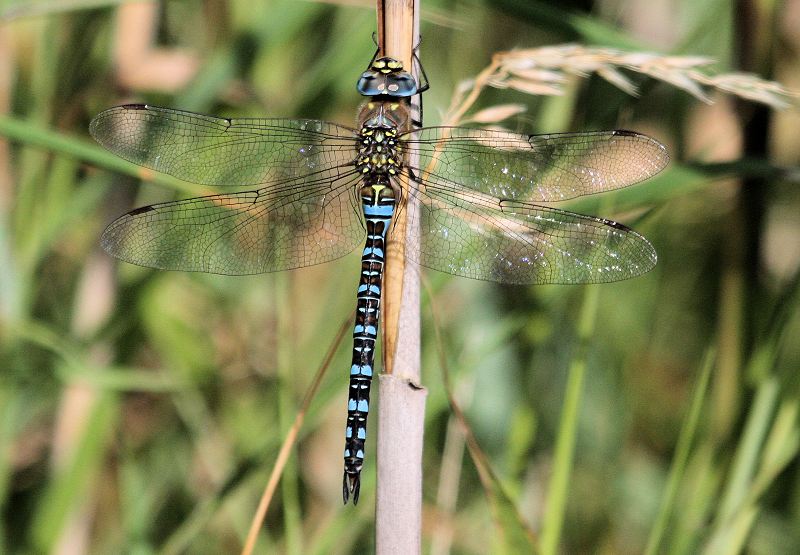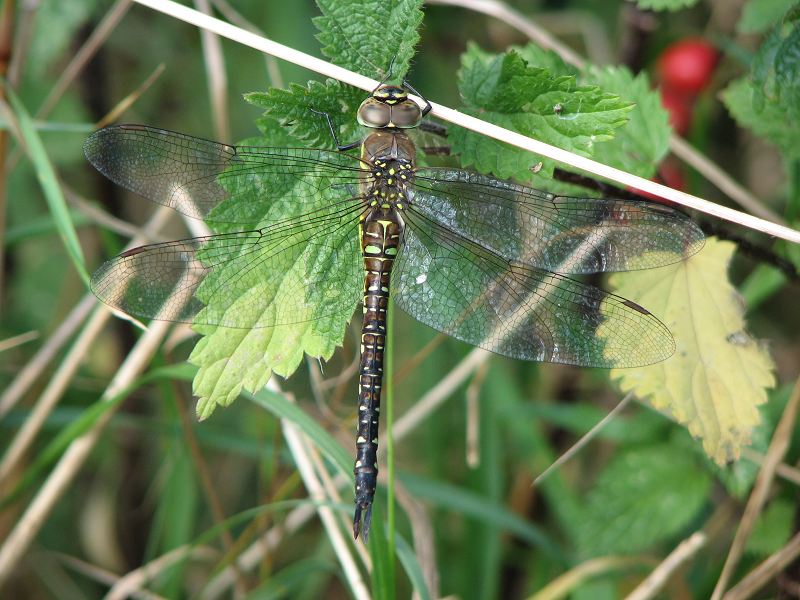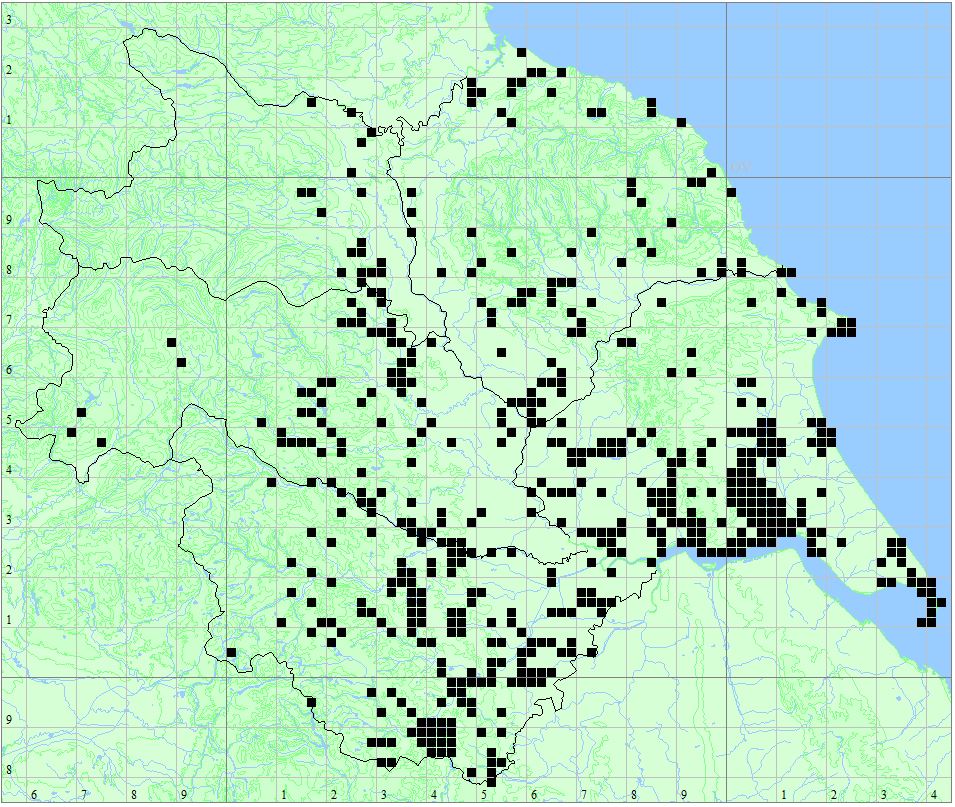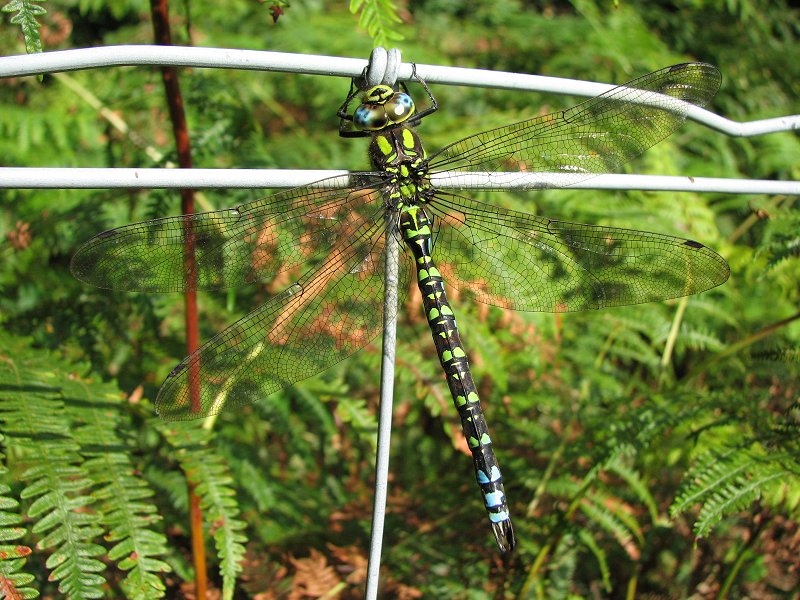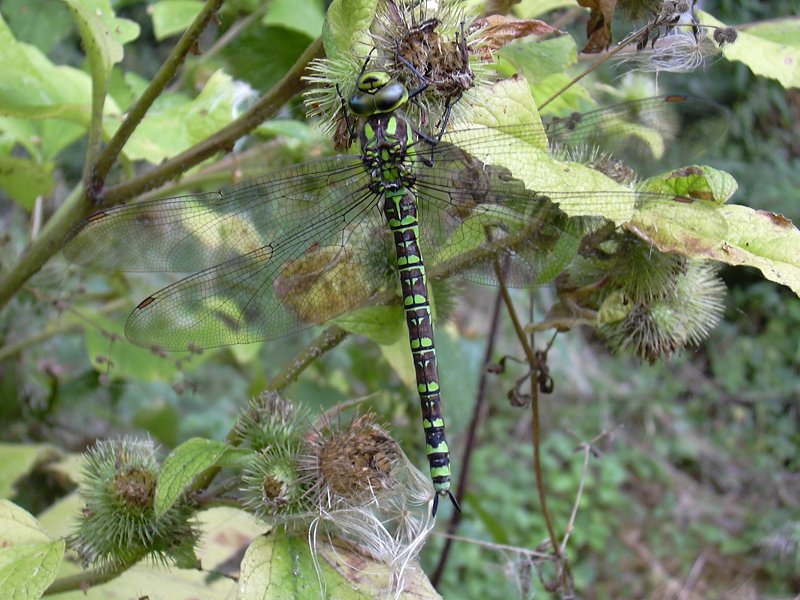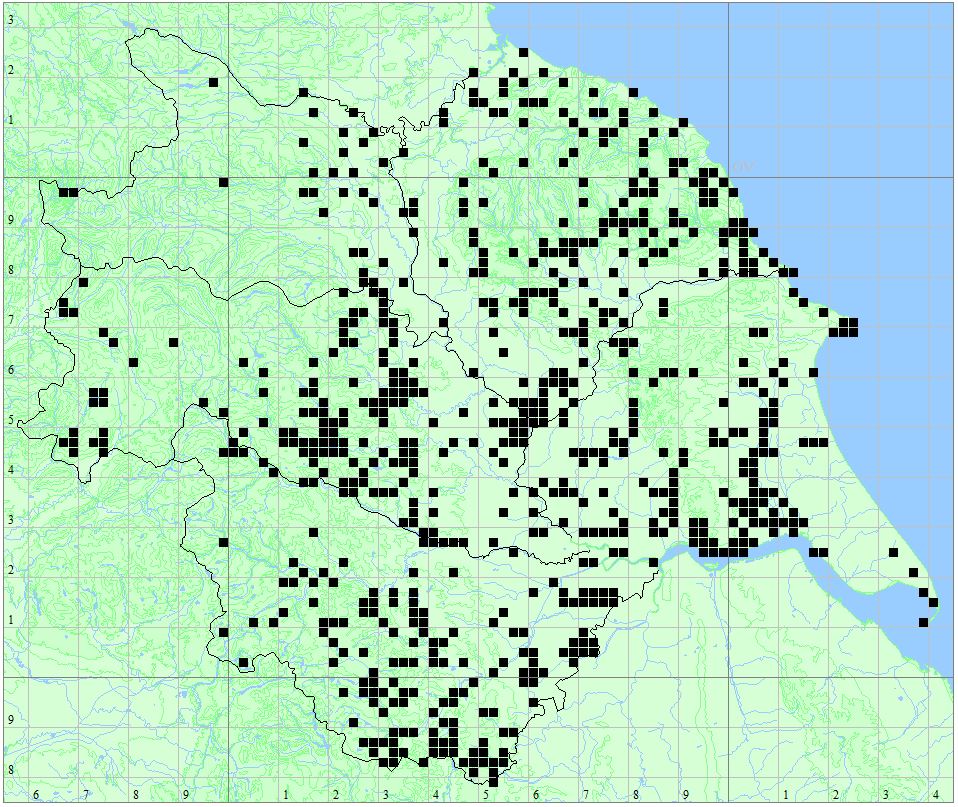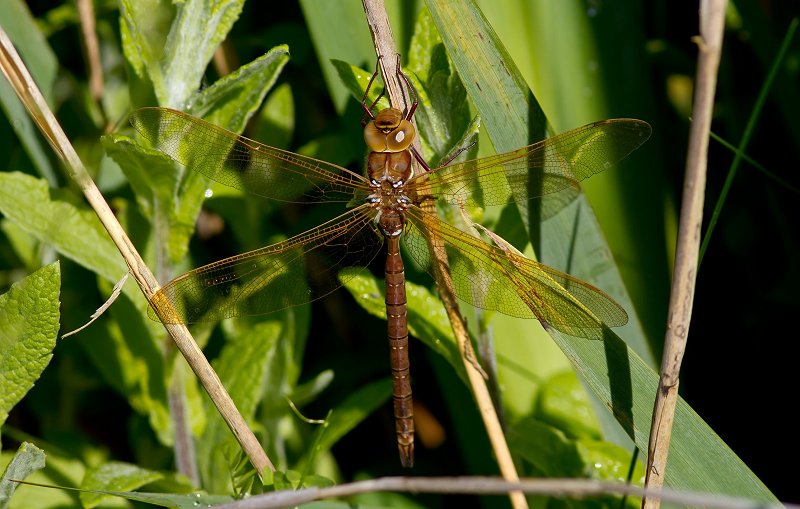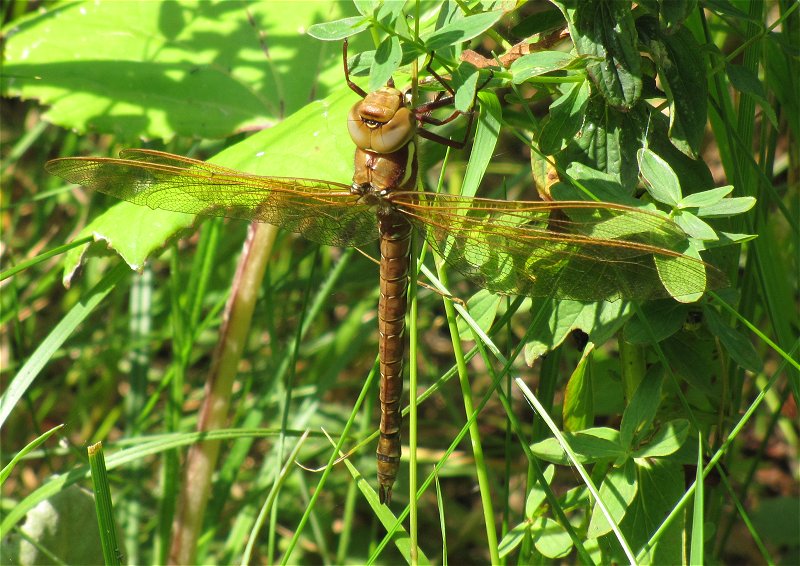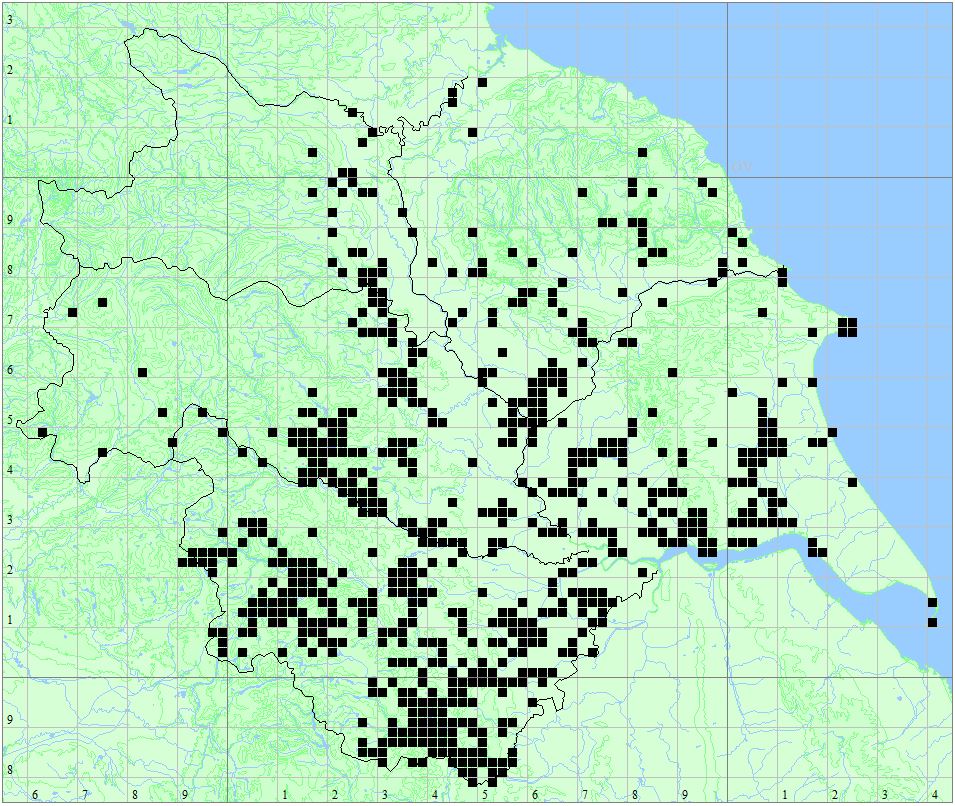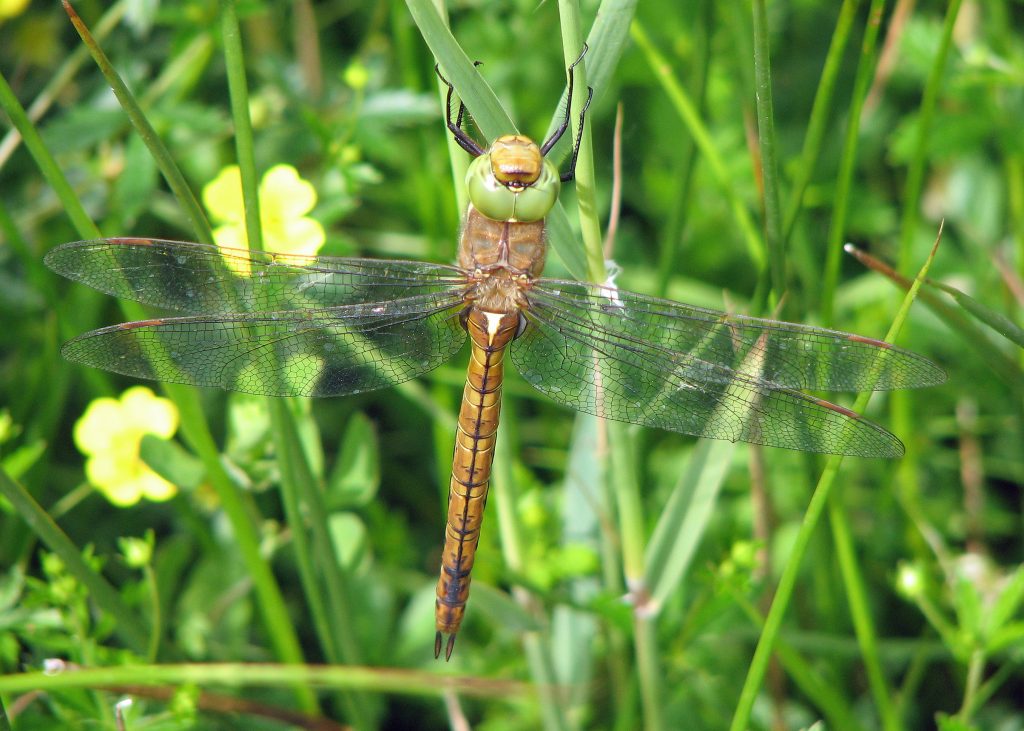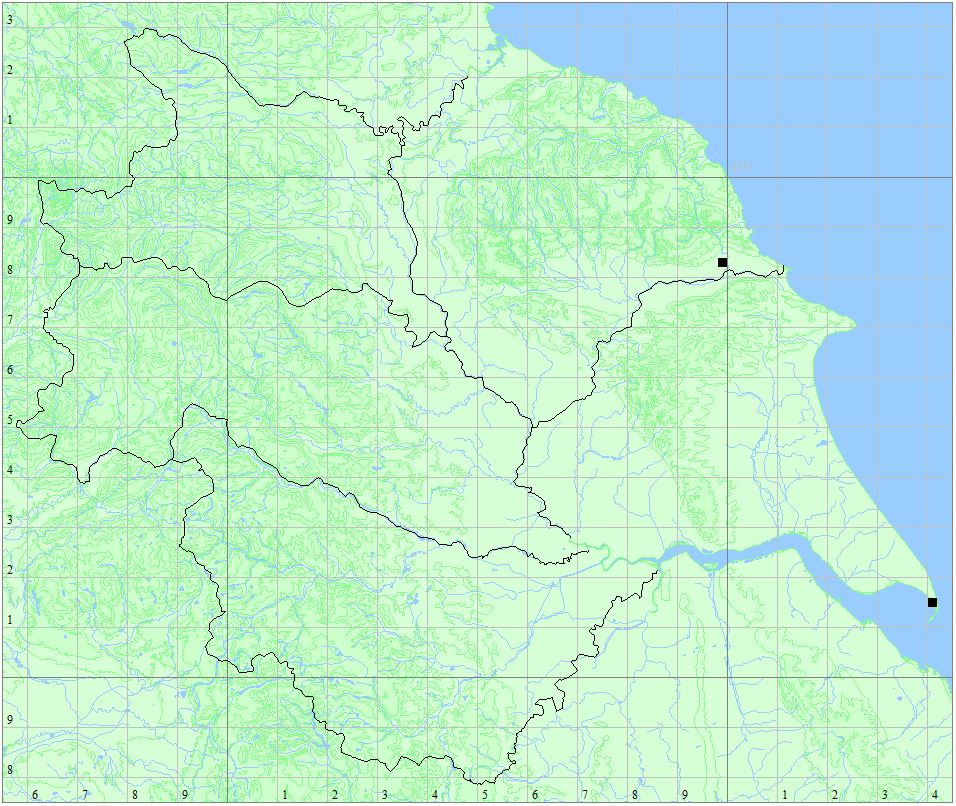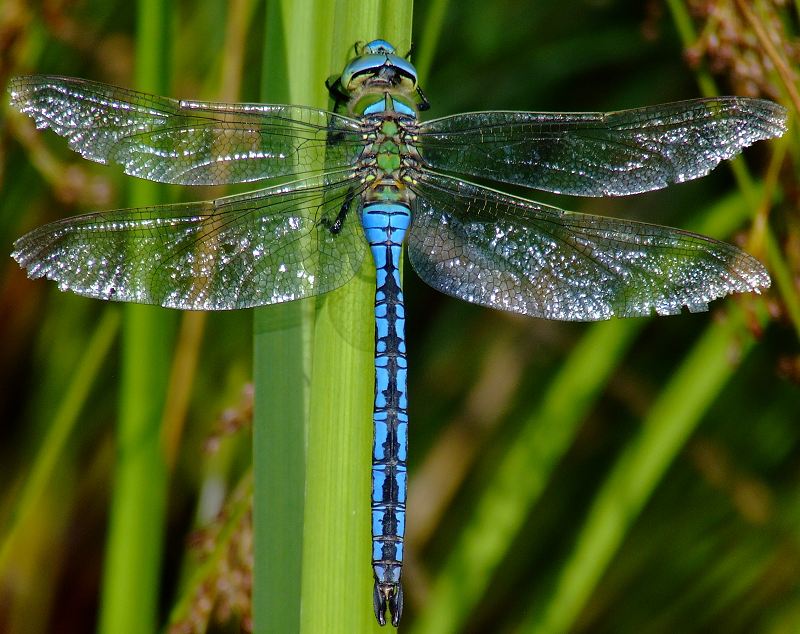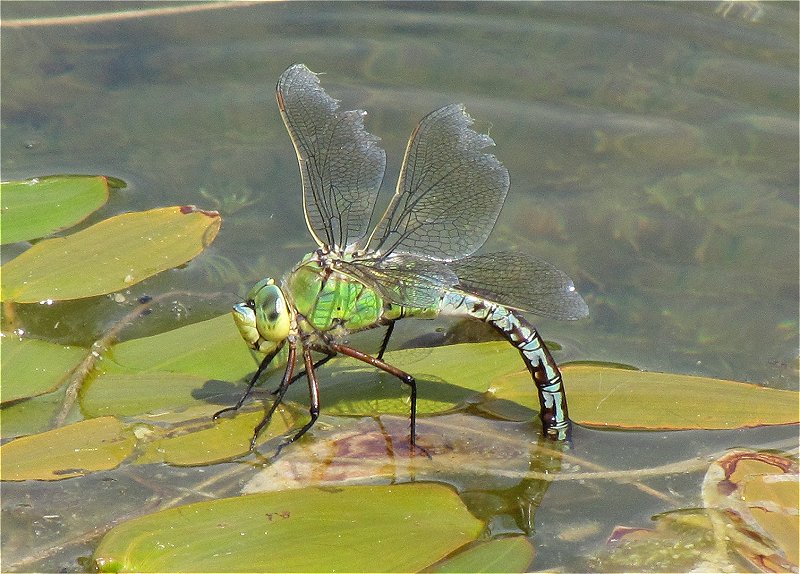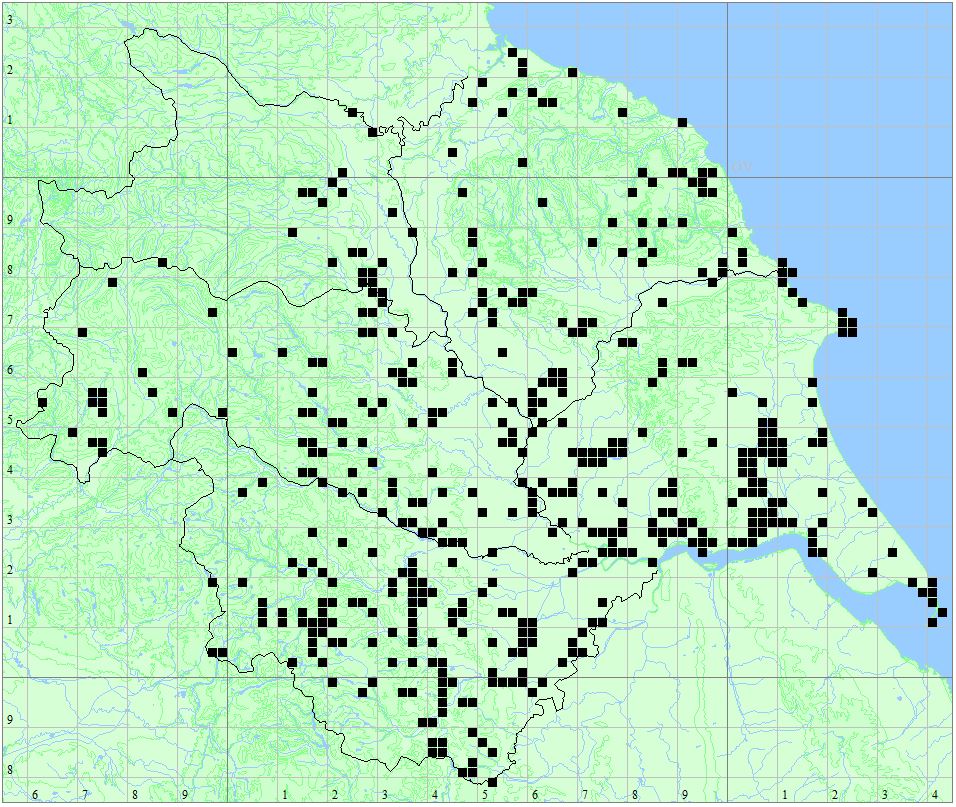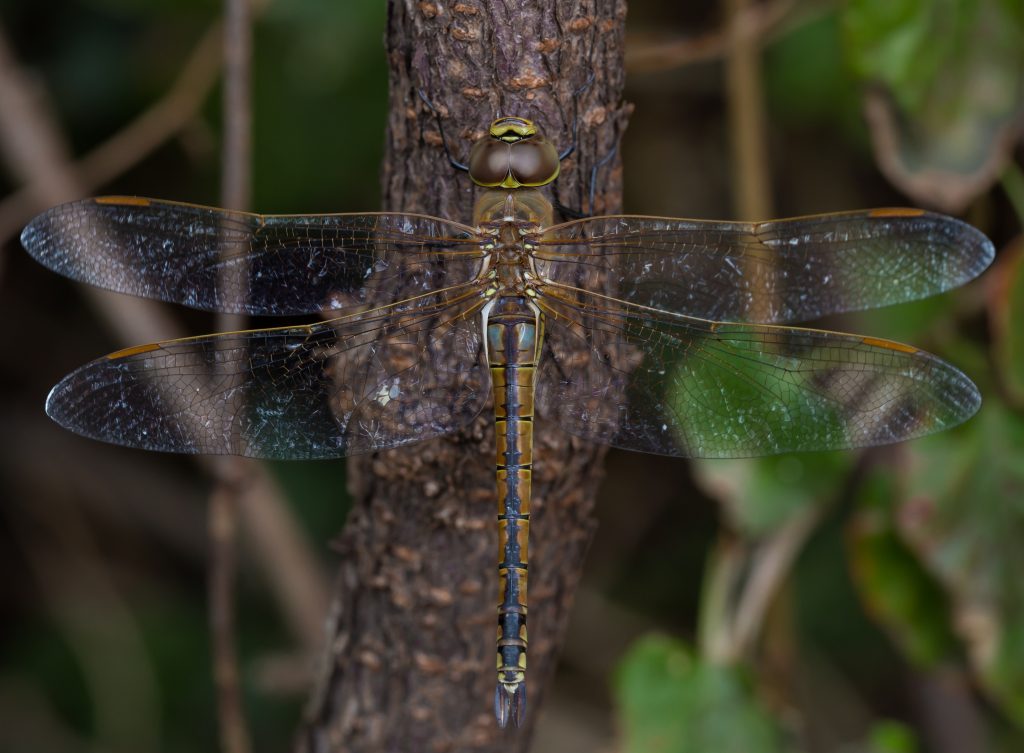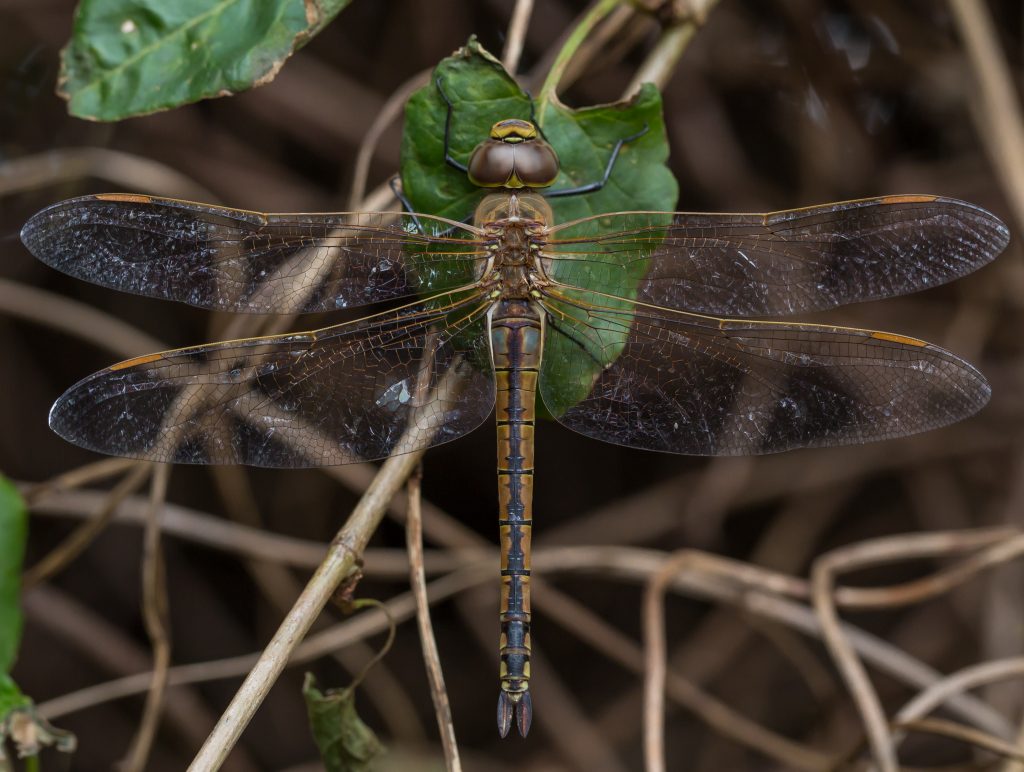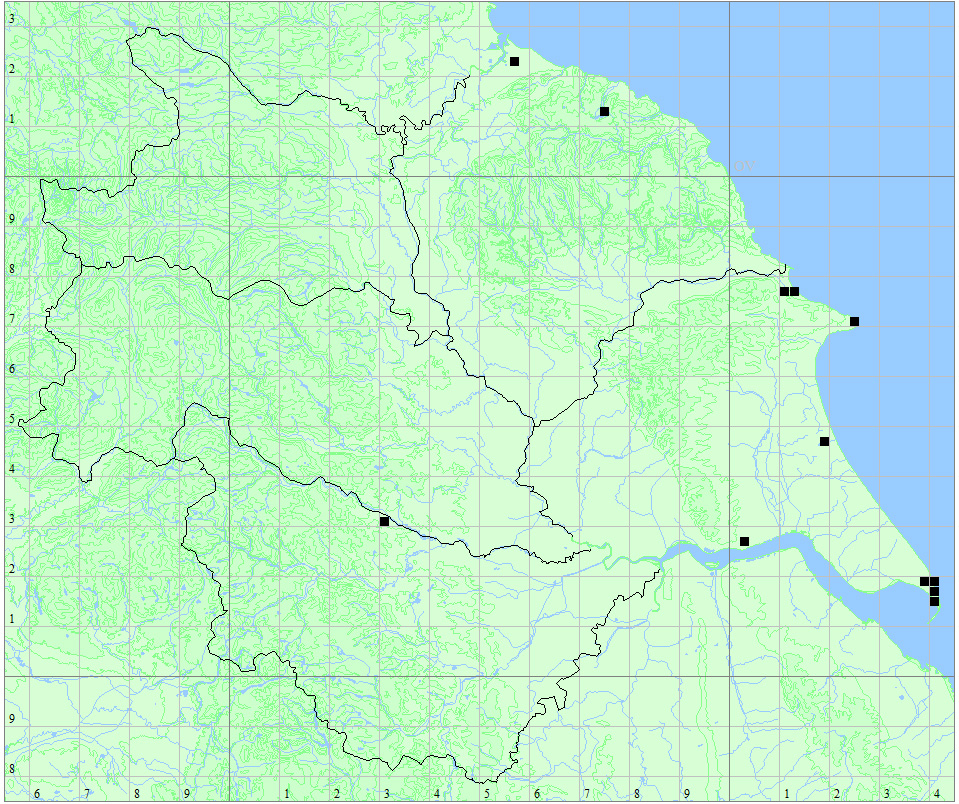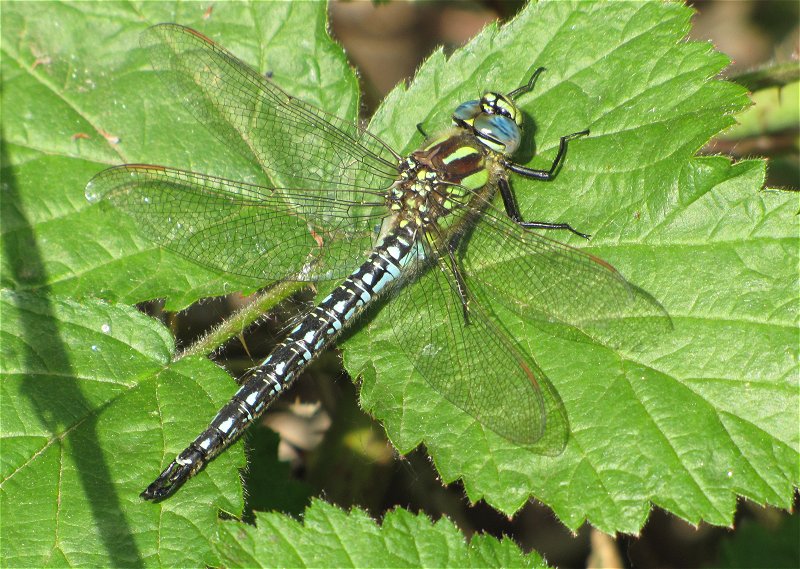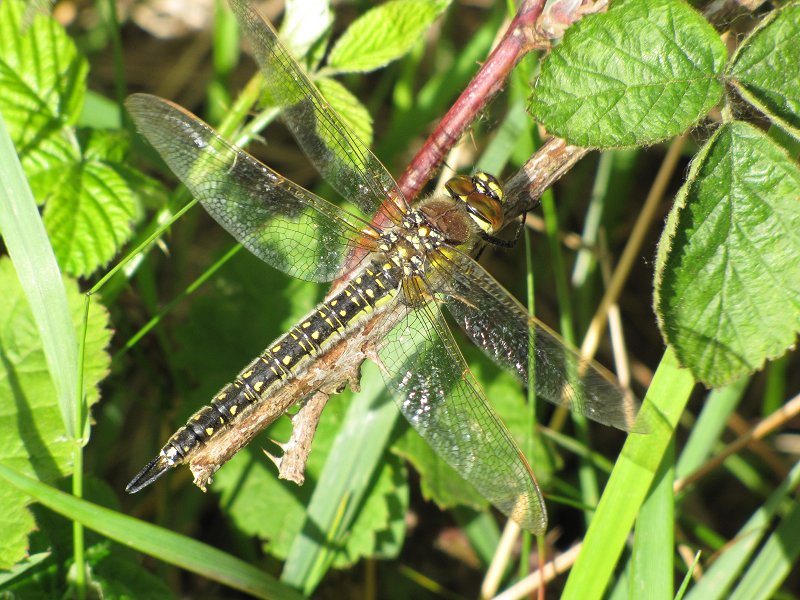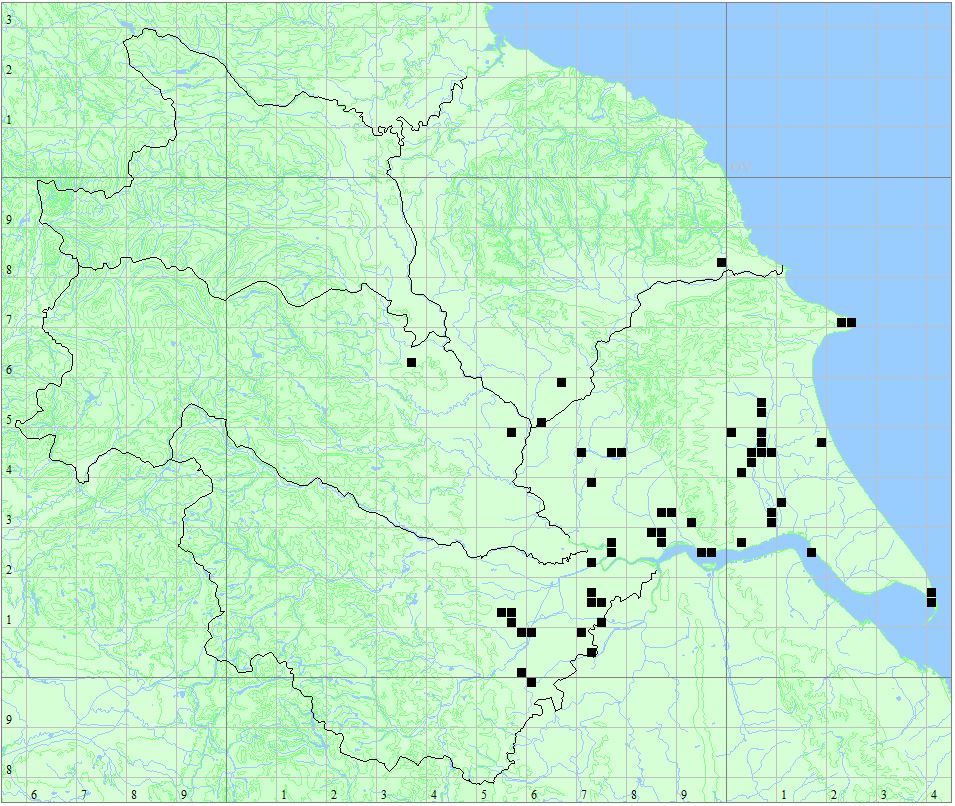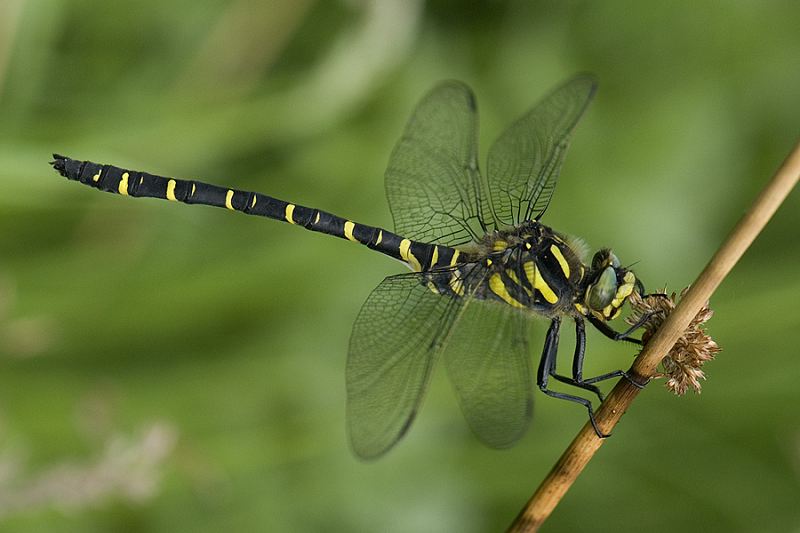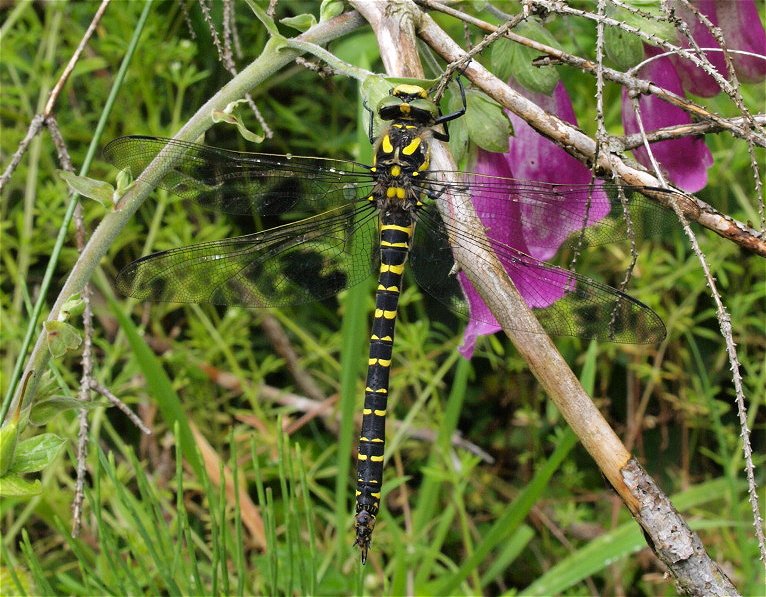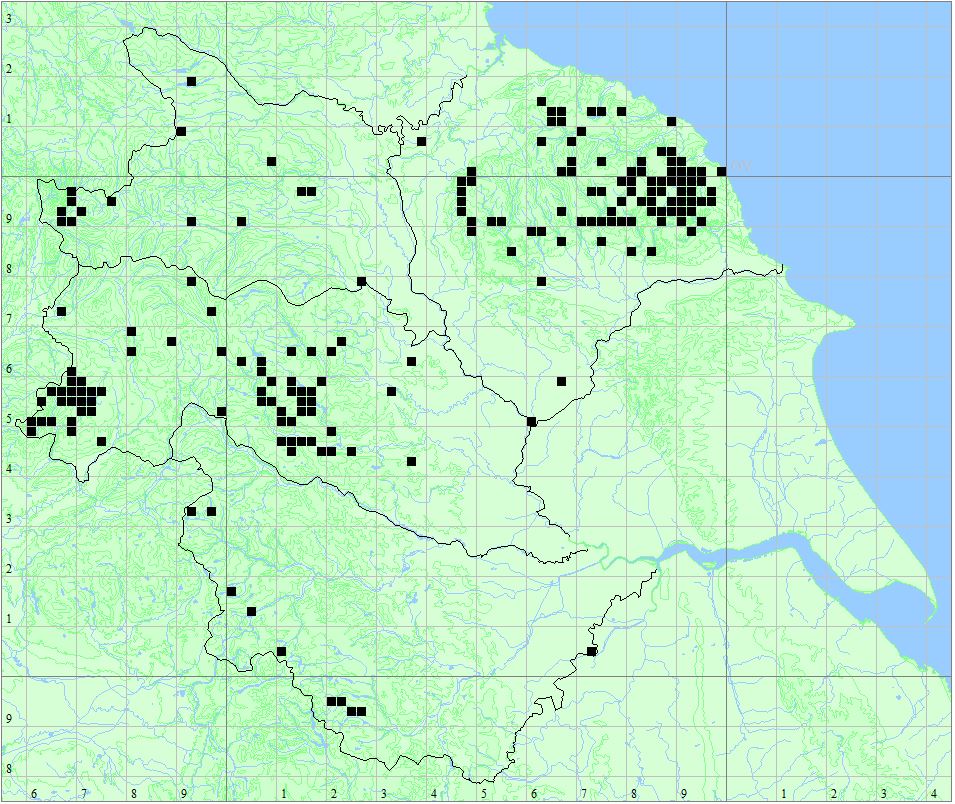<-Previous Species – Next Species->
Length
74mm, Wings 95mm.
Males
Thorax top is black , narrow yellow antehumeral stripes and sides are brown with 2 narrow yellow thoracic stripes; abdomen black with pairs of yellow and blue spots including segments 9 and 10; legs black; wings have brilliant yellow costa.
Females
Thorax brown; abdomen brown with paired yellow spots, sometimes green, rarely blue. Leading edge of the wing yellow.
Habitat
Prefers acidic conditions, consisting of bog pools, ponds and lake margins on moorland and heathland. Will also use slow-flowing sections of upland streams. Requires areas of emergent vegetation to breed.
Behavior
Males are territorial, regularly chasing off intruders of any species. They are relentless flyers and can often be found active in dull conditions. Copulation takes from 60-75 minutes, with pairs usually settling amongst the heather, shrubs or trees. The female oviposits alone, inserting the eggs into submerged vegetation. Oviposition may take place in dull weather, when the first sign of activity is the sound of rustling wings in low vegetation. Larvae develop over a period of two or more years amongst the submerged vegetation. They emerge, usually at night, on emergent plant stems. They regularly wander away from breeding sites to feed in sheltered areas, such as woodland rides.
Flight Period
Distribution Map
Locations
- Rodley Nature Reserve
- Moorgates Quarry LNR
- Thorne Moors – Humberhead Peatlands NNR
- Thorpe Marsh
- Oakhill & Goole Brick Ponds
- Walton Colliery Nature Park
- The Yorkshire Arboretum
- Hurst Dam
- Nosterfield Local Nature Reserve
- Timble Ings
- Johnny Brown’s Common
- Potteric Carr
- Dundale Pond
- The Tarn, Goathland
- Tranmire Bog
- Fen Bog
- Skipwith Common
- Pocklington Canal
- North Cave Wetlands
- Filey Dams
- Allerthorpe Common
